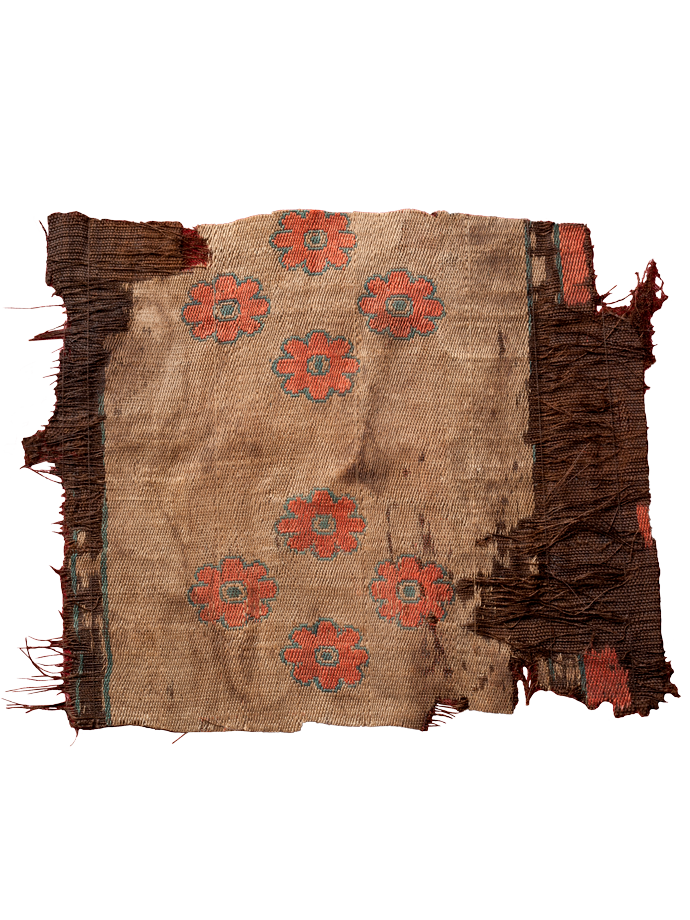A fragment of fabric from the grave of the Grand prince of Vladimir-Suzdal Andrey Yurievich Bogolyubsky (Dormition Cathedral, Vladimir)

A fragment of silk gold-embroidered fabric of linen structure. The background, painted originally in red, is filled with geometric patterns, it has a dark green outline of the picture in the form of grouped pairs of lions and birds on the sides of the tree of life. Across the width of the fabric, this ornamental motif is repeated in horizontal rows, with a distance between them of no more than 2 cm. Heads of animals and the bodies of birds are woven with a golden weft, consisting of a silk thread, entwined with a serous cover of intestines of animals with the finest gold amalgam.
This fabric, among other fragments of silk clothing, was found in one of the tombs of the Assumption Cathedral in Vladimir with remains of Andrei Bogolyubsky, his younger son Gleb and Prince Yuri Vsevolodovich, who died in the battle with the Tatars on the Sit River. Despite the lack of accurate data, in which of prince's burials was placed the expensive silk fabric with images of lions and birds, all researchers who studied this fabric, unanimously considered it a part of the clothes of Andrei Bogolyubsky.
The fabric due to a long stay in the burial changed its original color: the threads of the base, painted in an unstable red color, acquired a brownish-yellow tone. The outline of the pattern retained its green color.
The use of the golden weft in the design of only individual parts of the ornament, the construction of a clear pattern in horizontal rows, paired ornament and a complex geometric pattern of the background – all these features allow us to refer the fabric to the products of Spanish silk workshops.
The material confirms the information of the Spanish-Arab merchant Abu Hamid al-Garnati about the existence of trade relations between Russian lands and Spain in the early middle ages. Put to the tomb of Andrei Bogolyubsky in 1174, expensive silk gold-embroidered fabric, obviously, was brought to Russia no later than 60-70-ies of the XII century.
